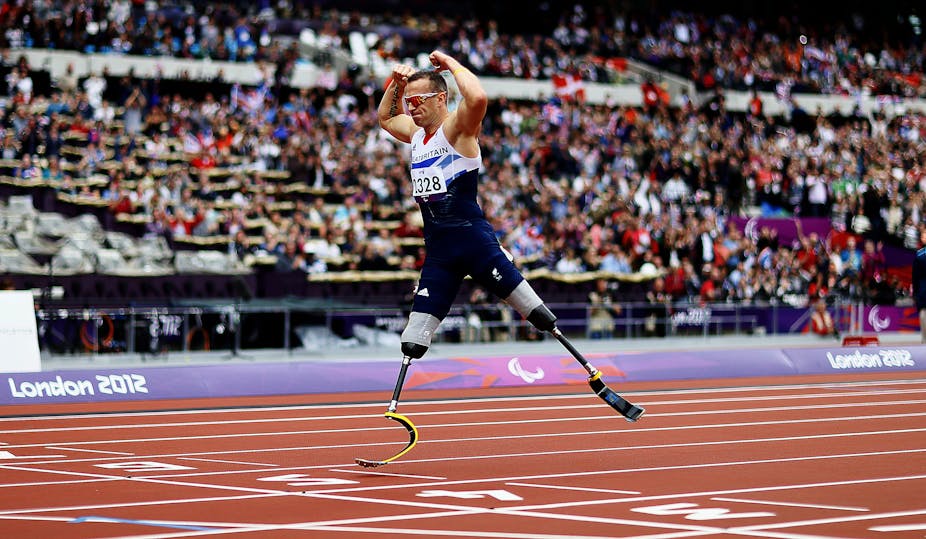The participation of Oscar Pistorius at both the London 2012 Olympic and Paralympics has been, at times, controversial. Yet technology used by above-the-knee amputees is also causing a stir at London 2012.
Britain has its own double-amputee track star Richard Whitehead who won gold and broke the world record in the 200m class T42 event in London last Saturday night.
After the event, Owen Gibson wrote in The Guardian that Whitehead was:
powered to victory with a stunning second half of the race as he stormed through the field with his prosthetic legs swinging from one side to the other.
Close examination of the race video (see below) shows how Whitehead is breaking the plane of the lane line with every stride, particularly early in the race. The International Association of Athletics Federations (IAAF), whose rules with minor amendments govern Paralympic Athletics, state in rule 163.3a (see page 141) relating to lane infringement:
In all races run in lanes, each athlete shall keep within his allocated lane from start to finish. This shall also apply to any portion of a race run in lanes.
In the race video you can clearly see that Whitehead’s right prosthesis is close to the outside lane line while his left is swinging over about 25% of the lane on his inside.
While there was no danger to another athlete in the 200m on Saturday night, because he got a poor start, there will always be a danger that Whitehead will collide with another competitor once he builds up momentum. Any such contact is against the rules.
Herein lies another potential problem for the International Paralympic Committee (IPC) Athletics Classification team. Whitehead is a class T41 athlete, which means he is a double amputee above the knees. He ran on Saturday in an event where the other competitors were T42 single above-the-knee amputees.
The T42 runners have a mechanical knee on their prosthesis leg whereas Whitehead’s prosthesises are more like stilts without knees. As a result Whitehead runs in a “cyclonic” manner which invades territory on the track reserved for other competitors.
Whitehead stands very tall and while his fellow competitors have not publicly complained, IPC athletics will need to look at the combination of T41/42 just as they should in T43/44 because of the Oscar case.
Whether Whitehead breaking the plane of the lines on the track give him an advantage also needs to be debated. Perhaps there needs to be an amendment to IAAF rule 163 which is currently explicit regarding breaking the plane of the line.
For athletes with two human legs it is clear they cannot go out of their lanes. And to date we have seen very few athletes on the track that swing their legs in the cyclonic, some might say dangerous fashion of Richard Whitehead.
But what is certain is that I wouldn’t want to be a slow starter lining up beside Whitehead in the 100m T42 heats tonight (AEST), worrying about whether I would be tripped up by his running action.
I look forward with interest to see how the IPC Athletics Committee deals with this and other controversial cases that events in London have brought to our attention.

